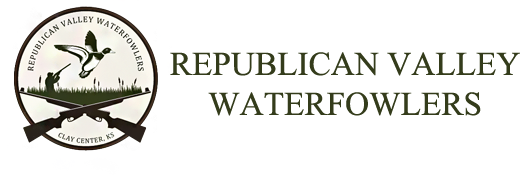Hunting on your own can be tough so it’s no wonder why so many folks bring along their four legged, furry partner on exciting waterfowl hunting experiences. Their eagerness to jump into wintery cold water to retrieve the prize makes it worth it. But what’s the easiest way to train your loyal companion for such adventures?
Republican Valley Waterfowlers would Like to Offer Some Tips on How to Train your Dog to Retrieve Ducks and Geese from the Cold Water
Picking The Right Breed of Dog For Hunting
Getting the best breed for the job is vitally important. There are quite a few breeds up to the task of helping in the waterfowl hunting escapades. A few of the most popular are Golden and Labrador Retrievers as well as Springer Spaniels. Each breed requires different care and has varying levels of energy. It’s best to do your homework and decide which breed is better suited for your home living, as well as your duck hunting needs.
Can You Adopt a Trained Hunting Dog?
Where you can often find an adult pooch already trained in hunting, training a puppy to hunt with you is easier. This is because many hunters have their own style and desires of what their partner contributes to the hunt. Along with the puppy learning to adapt to your hunting style, it will also make the bond a lot stronger, and the pup will easily find it’s loyalty to you. However, shelters are often consumed with mix breeds that can be taught accordingly. Shelters will often even let you foster a few and you can work with the pup more prone to hunting, and still help the community in saving a pooch’s life and getting it into a good home.
Teach your Hunting Duck Dog Basic Commands like Teaching to Point
Start with a small wading pool, and introduce the pup to water in its early years. Showing your puppy that water is fun and enjoyable will better prepare him for the upcoming life style. Begin your training journey the basics of “sit” and “stay”. They serve as fundamentals when training for the complexity of waterfowl hunting. Food is a great reward in training. Hold the food above his head and while applying a gentle pressure on his hind legs, command the little one to sit at the same time. The moment he complies, reward with him a yummy treat. Repeat this over and over. He will sit at the sight of food eventually, and later will not need the incentive and only the command.
Practice with Duck and Goose Decoys in a Spread
Introduce your hunting dog to decoys and scents. Your pup needs to quickly learn the difference between your decoys and waterfowl. Use dummies and waterfowl scents to start training. Give the decoys and the dummy a far apart spread so your dog has to do a little work to find it. Practice makes perfect. Daily practice is optimal, but the more the better. Reinforce the spot on behavior with tasty rewards. During training, whenever the pup does well on the different exercises, make sure he is frequently rewarded. Dogs learn quickly when they know they are in for a treat.
Introducing a Hunting Dog to Gunfire
Bringing man’s best friend along with you to target practice is just as important of other aspects of training. He needs to be as comfortable and familiar with guns as he is with ducks. Boat training may also be beneficial before going on a real hunt. Practice loading up and disembarking, along with retrieval exercises using a dummy. Keep training simple and basic. Once your partner is conditioned to help you on a real hunt, he will pick up more and more familiar tasks and quickly be your faithful waterfowl hunting partner.






